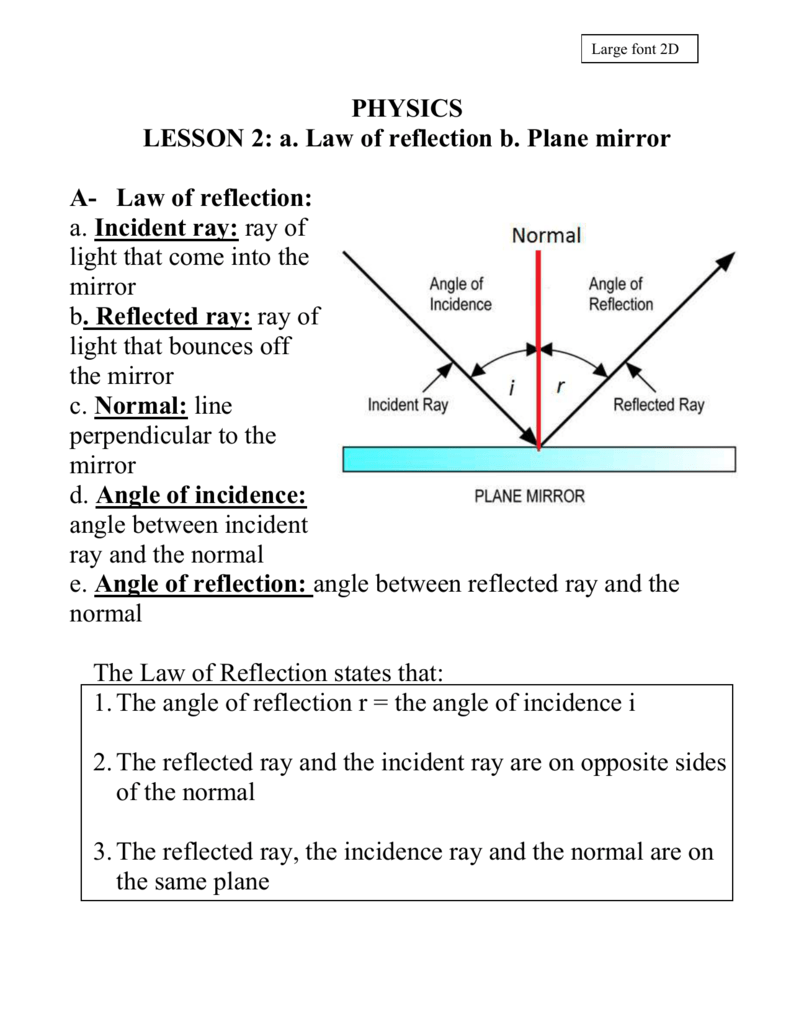

After removing any protective paper from the pieces, connect each mirror to its base by aligning the base perpendicular to the rear of the mirror as shown. Each mirror uses a single stand (MirrorStand.svg) cut from 1/8” wood or acrylic sheet. Cut and attach a stand to each mirror, to allow it to stand upright on any flat surface. Otherwise the laser can reflect upwards in an unsafe manner during cutting. Warning : When using a laser cutter with mirrored acrylic, be sure that the reflective side of the mirror is facing downwards or is masked with protective paper. All mirrors should be cut from 1/8” mirrored acrylic. The exercises in this lesson require two plain mirrors (BasicMirror.svg) and one mirror with a hole in the center (MirrorWithHole.svg). On the other hand, when we shine the light of a laser pen on paper, the light spot can be seen from all directions. In figure 3a we caught this reflection on a piece of paper.

This is called specular reflection but with children we just call it mirror reflection (Figure 2a and 3a). The light beam is reflected in a particular direction and can only be seen in that direction. When you shine the light from a laser pen or a narrow and parallel beam of light from a flashlight onto a mirror (please try the set up of figure 31 ), then quite surprisingly one does not see a light spot on the mirror. Diffuse reflection occurs with all objects around us except for shiny objects like mirrors. This is called diffuse reflection (Figure 2b, 3b). This means that the light rays of the flashlight which are coming from one direction, are reflected or “scattered” by the ceiling in all directions and enter the pupils of the eyes of all present. When you shine light from a laser pen or flashlight on the ceiling, everybody in the room can see the light spot on the ceiling. Nowadays the metal at the back of mirrors usually is a thin layer of aluminum. Starting in the 19th century mirrors became much cheaper thanks to new technology and entered the houses of common people. From the 17th century mirrors were used more and more as decoration. Therefore the mirrors in the palace of Versailles were very special and a sign of opulent wealth and power. Mirrors were produced too, but they were very expensive.

Glass blowing was discovered during Roman times but only in the 12th and 13th century AD a glass industry developed in Venice and Southern Germany/Bohemia. Glass was discovered by the Phoenicians around 5000 BC but only during the Roman times people in Sidon (Lebanon) made the first glass mirrors by putting some metal at the back of glass. Over 2000 years ago Egyptians, Greeks, and the Romans made mirrors of pieces of polished metal, usually silver and sometimes bronze. Mirroring was considered some kind of magic. People have seen their mirror image for a long time in dark pools of water, rivers and lakes. This lesson contains a number of different explorations, but students will undoubtedly discover their own original ways to use the mirrors as well. Mirrored acrylic is lightweight, easy to shape with a laser cutter, and won’t shatter as easily as a glass mirror.
#ANGLE OF REFLECTION OFF A MIRROR FREE#
To conduct the explorations in this lesson, students will construct their own free standing mirrors from reflective acrylic. While light travels too quickly to be viewed directly, we can determine its path by observing the way it bounces off of objects and mirrors to form reflections. Though it usually travels in a straight line, light reflects off mirrors in much the same way that a ball bounces off a wall.


 0 kommentar(er)
0 kommentar(er)
